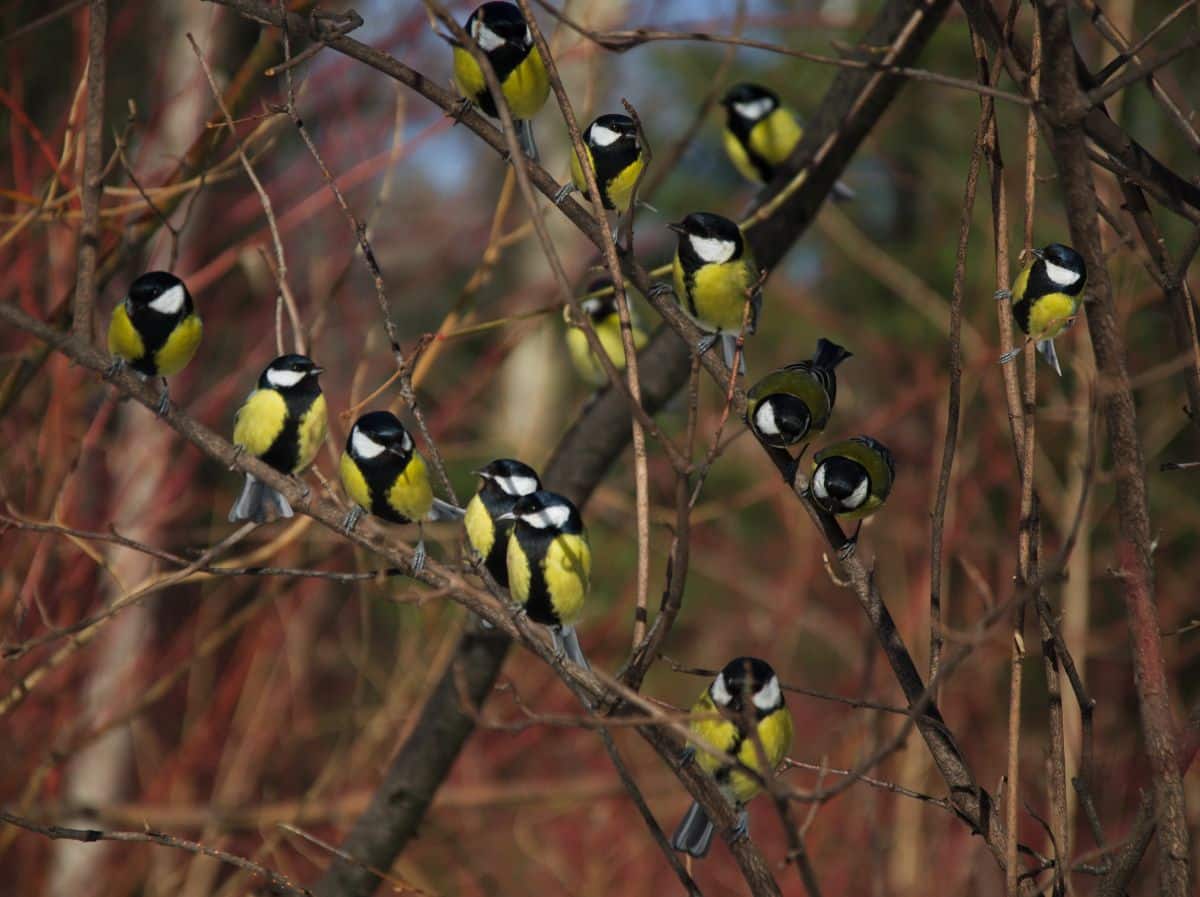
Tits are small birds with plumage ranging from colorful to plain, short legs, and stout, trilateral bills. They’re easy to recognize, especially on feeding tables, due to their agile and always-on-the-go nature.
Here are the types of birds in this family, including facts and key differences among these beautiful garden visitors.
Contents
The Great Tits
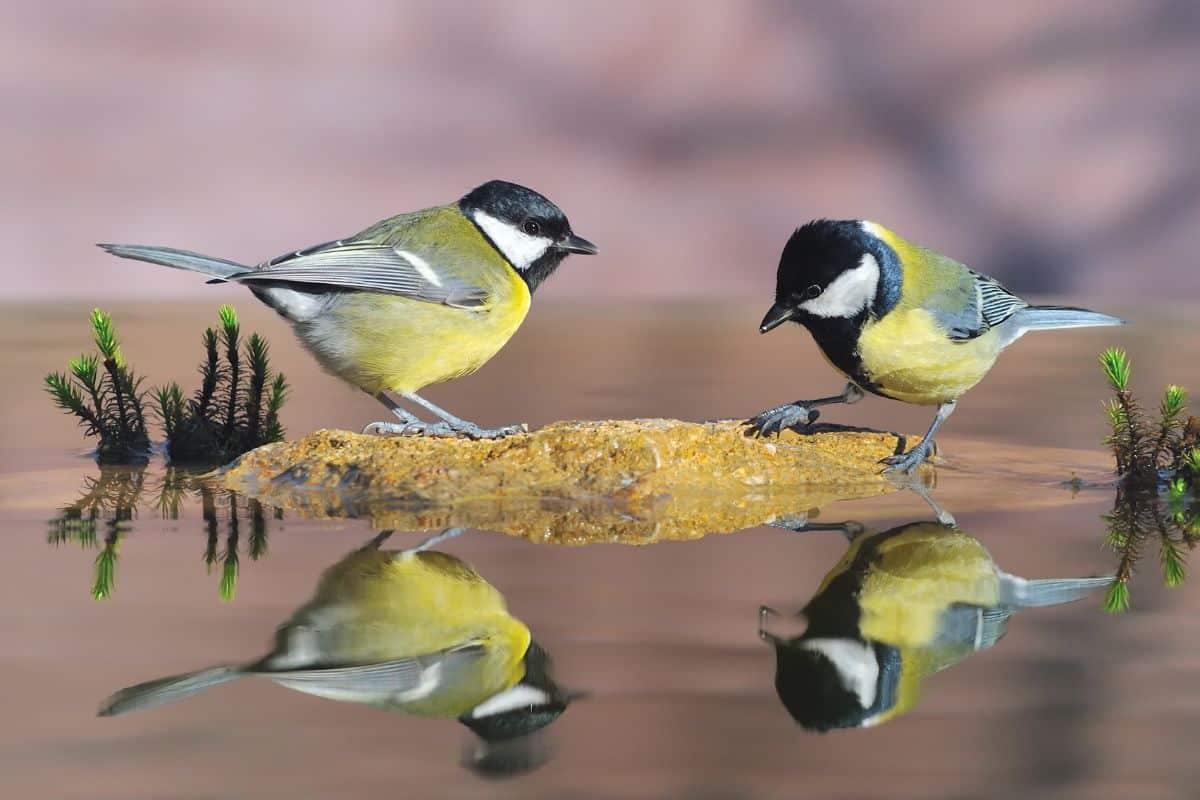
Great tits are the largest species in the family, growing up to 12.5 to 14 cm tall. They typically find habitat in deciduous woodlands and mixed forests. However, they also adapt to garden boxes and are valuable visitors since they feed on destructive insects.
Great tits enjoy a lifespan of 3 years. However, they can easily outlive the duration, with the oldest of the species surviving for 13 years.
Physical Features of Great Tits
You can distinguish the great tits from their yellow underparts, the halving black stripe at the center, blackheads, and white triangular patches on the cheeks. The great tit wings are long, with black flight feathers having blue-gray coverts, white tips, and black tertials.
The juvenile great tits look more like their adult family. However, their cheek patches appear yellowish and have more faded colors.
While their males and females may look closely the same, the former have wider halving black stripes and sharper colors than the latter.
The Sound of Great Tits
This bird species has a signature seesawing song with the two-syllable “ti-ta, ti-ta.” When scolding, you’ll typically hear a harsh “che che che che” while their fledged young ones emit high-pitched “tete tete.”
Feeding and Nesting
Great tits feed on larval insects, spiders, fruits, and seeds. They love cavity habitats and typically set their nests in holes in trees, walls, letterboxes, or nest boxes.
Female great tits lay between 5 to 12 eggs, with one or two broods yearly.
Where To See
You can see great tits all over Europe, except for coniferous forests and the high north regions. They are also common and successful garden visitors, and you’ll see them on feeding tables.
The Blue Tits
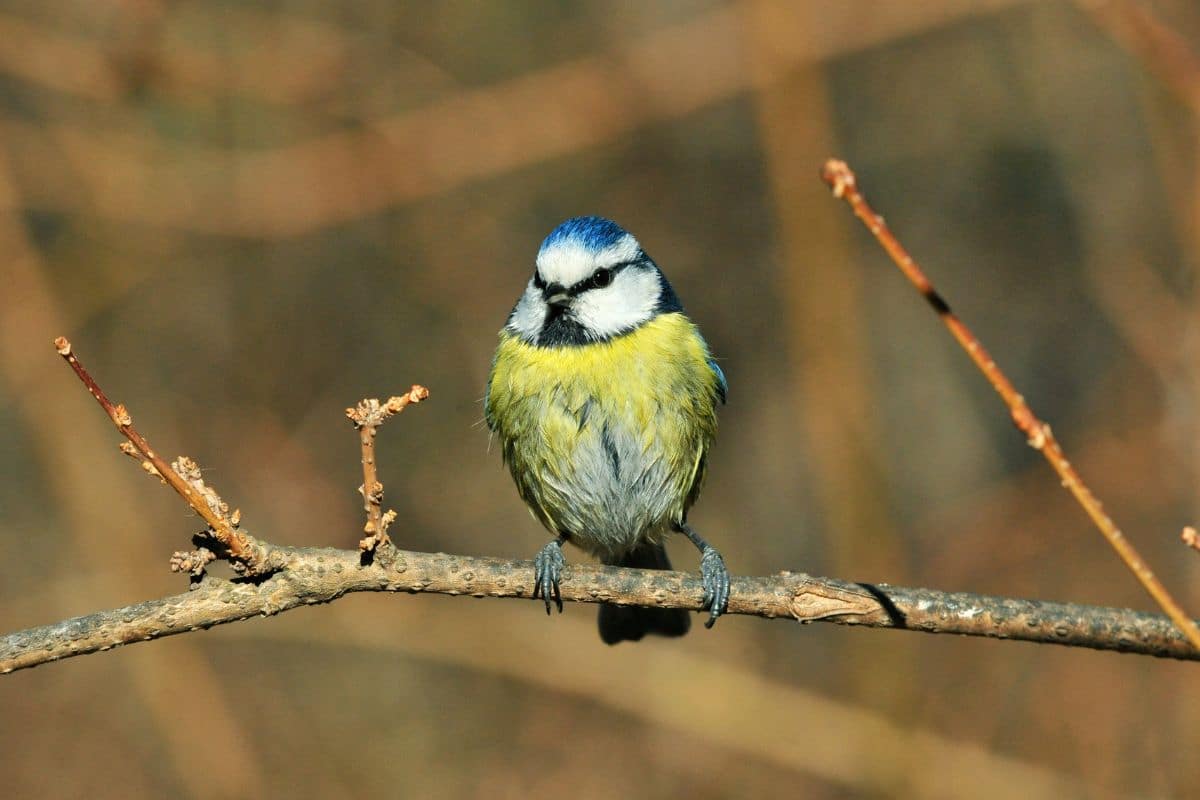
The blue tits grow up to 12 cm tall and 11 grams of weight. They have a lifespan of between 2 and 3 years but can easily extend the limit. The longest surviving blue tit lived for staggering 21 years.
Physically Features
The blue tits have a distinguishing blue cap that can rise to form a crest. You’ll also know them from their blue-black line that runs through their eyes and the white face and forehead. Like the Great Tits, these birds have green backs and yellow color in their chests and bellies.
Their feathers depict a Sulfur color. The female and male blue tits look alike, except for the brighter plumage and more visible blue on the head of the latter.
The Sounds
The Blue Tit has a relatively distinctive sound that’s quite challenging to define. The first part of the sound comes like a shrill whistle, which dives into some vibration towards the end. It’s more of a “tsee-tsee-tsee-di-di-di-di” sound.
Feeding and Nesting
Blue Tits love nesting in holes in trees, little crevices in buildings, or stone walls. They’re available all year round and rarely migrate from their birthplace. The females can lay between 7 and 13 eggs.
Where Can You See Blue Tits?
Blue tits are everywhere in the UK, except for the northwestern isles.
Coal Tits
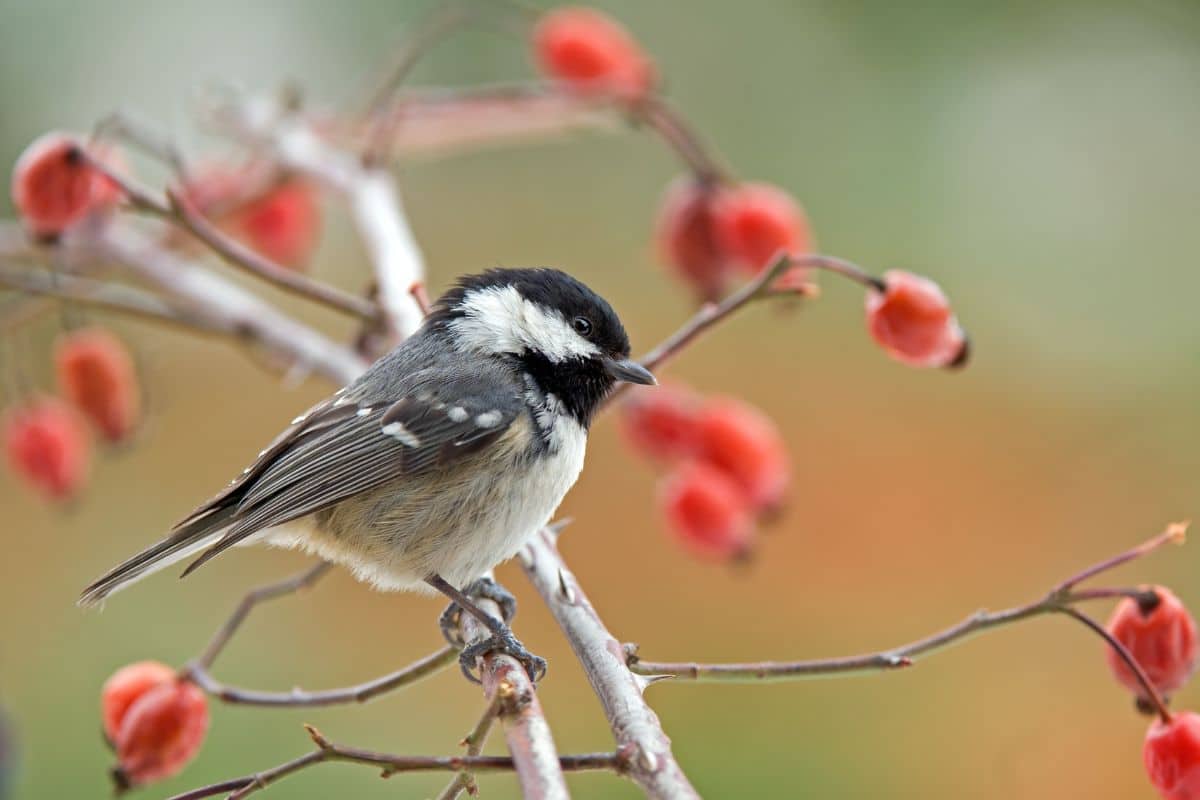
This species isn’t as well-known as the first two, though they’re also common in gardens. They’re the smallest in the family, with a height ranging from 10 to 11 cm.
Coal Tits Physical Appearance
The coal tits’ colors aren’t as vivid as their Great Tit relatives. Their feathers are off-white, with visibly white cheeks and patches behind the head. Their heads, throats, and neck feathers have a blue-black color.
Their chests have a whitish hue, with buff-colored bellies, dark grey wings, backs, and tails.
The Sound of Coal Tits
Like their Great Tit relatives, Coal Tits have a repeated two-syllable song, “ti-ta, ti-ta,” with numerous variations. However, their sound comes out slightly higher, faster, and slurred than the Great Tits.
Likewise, the Coal Tits make several “see see,” calls and little pip sounds.
Coal Tits Breeding and Nesting
Coal tits nest in tree stumps, wall crevices, or mice burrows. They typically begin breeding in May and can lay a single clutch of between 7 and 11 eggs per season.
They often use bird feeders but rarely stick around the feeding tables. Coal Tits typically wedge their foods somewhere in the trees to eat later.
Where To See the Coal Tits
The coal tits are relatively fewer than great and blue tits. However, you can easily see them in gardens all over the UK mainland, conifer woods, woodlands, or hedgerows.
The Rare Tit Species
There are several species alongside the three common tit birds in the family. These include the Marsh, Willow, Crested, Long-tail, or Bearded Tits.
Marsh Tits
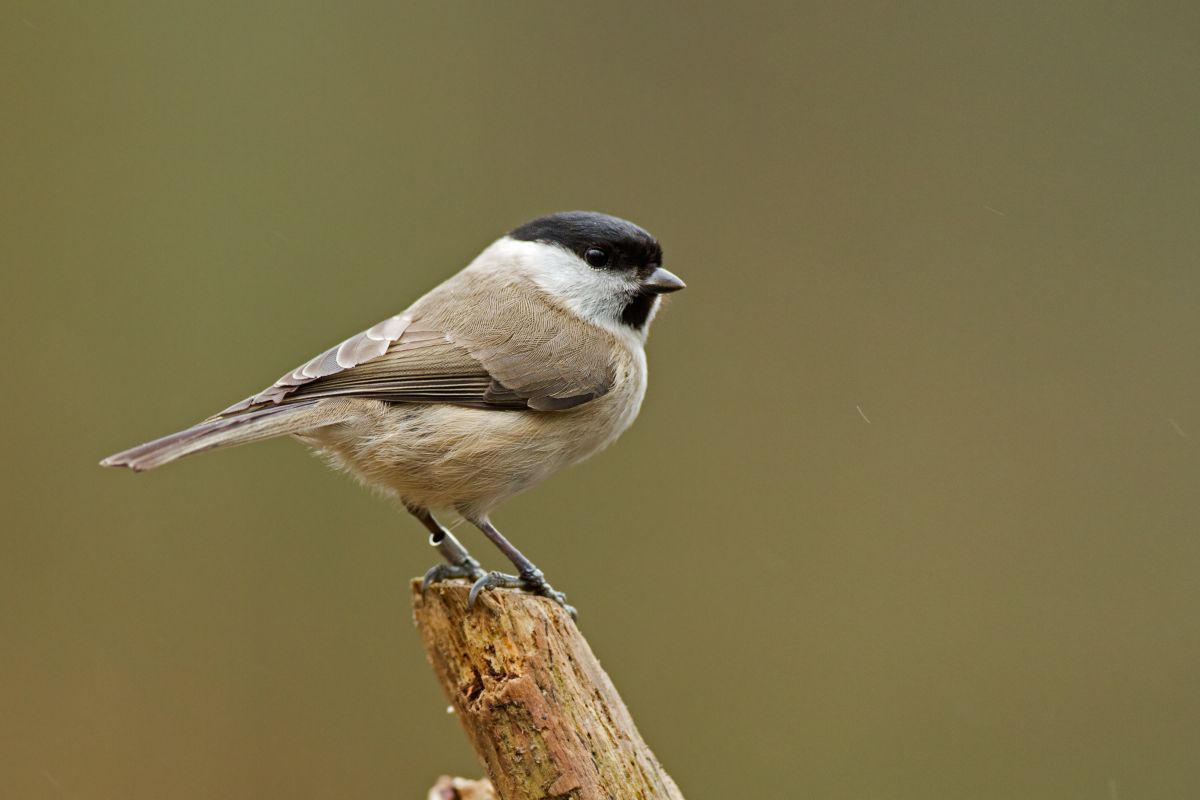
They closely resemble the Coal Tits. However, they are pretty scarce. Also, they typically avoid people and prefer broadleaved woodlands. Their colors are similar to the Coal, only that they lack the white patch at the back of the head.
They eat insects, seeds, and berries and may keep food like their Coal relatives.
The Marsh Tits nest in trees or holes, though they don’t dig their holes. The females lay between 7 to 9 eggs during their breeding seasons. To attract them to your garden, you may want to display sunflower seeds, fat balls, or crushed peanuts.
Willow Tits
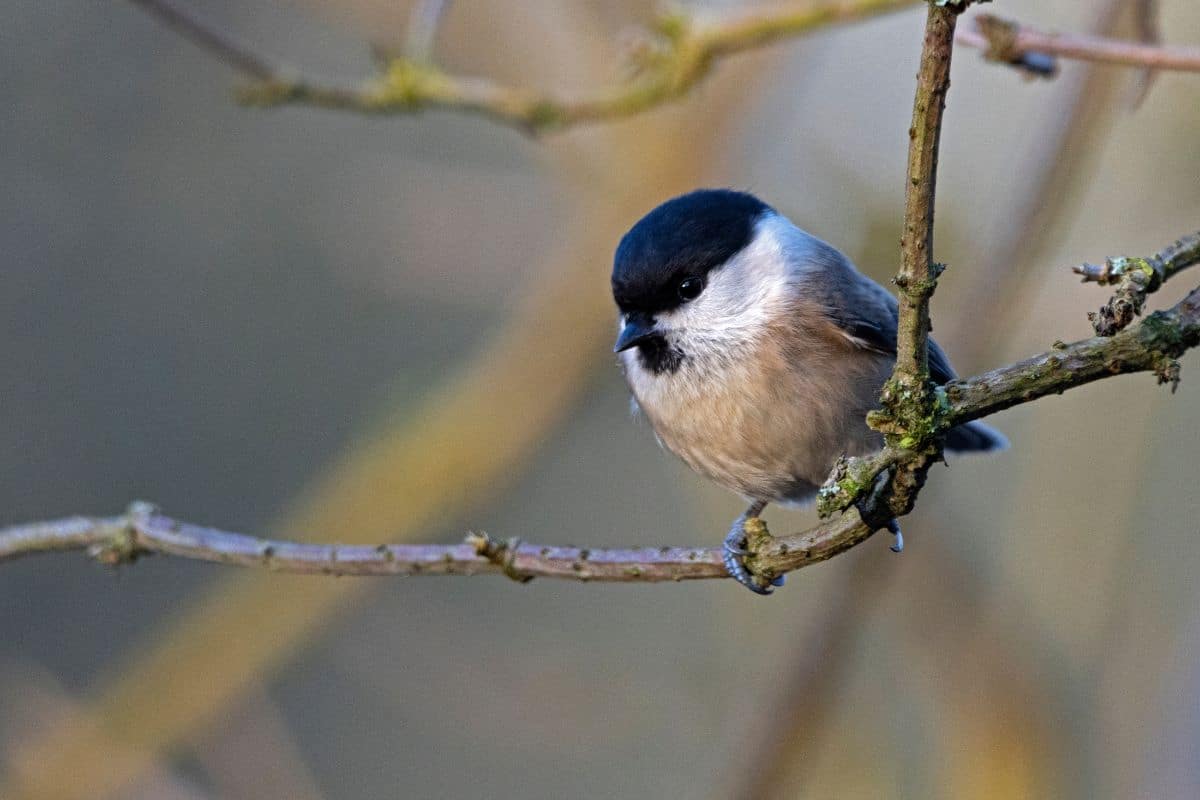
Like the Marsh Tits, these birds resemble Coal but don’t have the white patch at the nape of the neck. They’re also less common, avoid humans, and are scarce. The Willow Tits prefer wet, shrubby habitats and are between the Great and Blue Tits in size.
They typically nest in the rotting deadwood and keep the entrance to their holes to about 2 or 3 inches in diameter.
They only visit garden feeders when their choice of insects and berries is scarce. Their females lay between 6 and 8 eggs during April.
The Willow tits have a lifespan of approximately three years.
Crested Tits
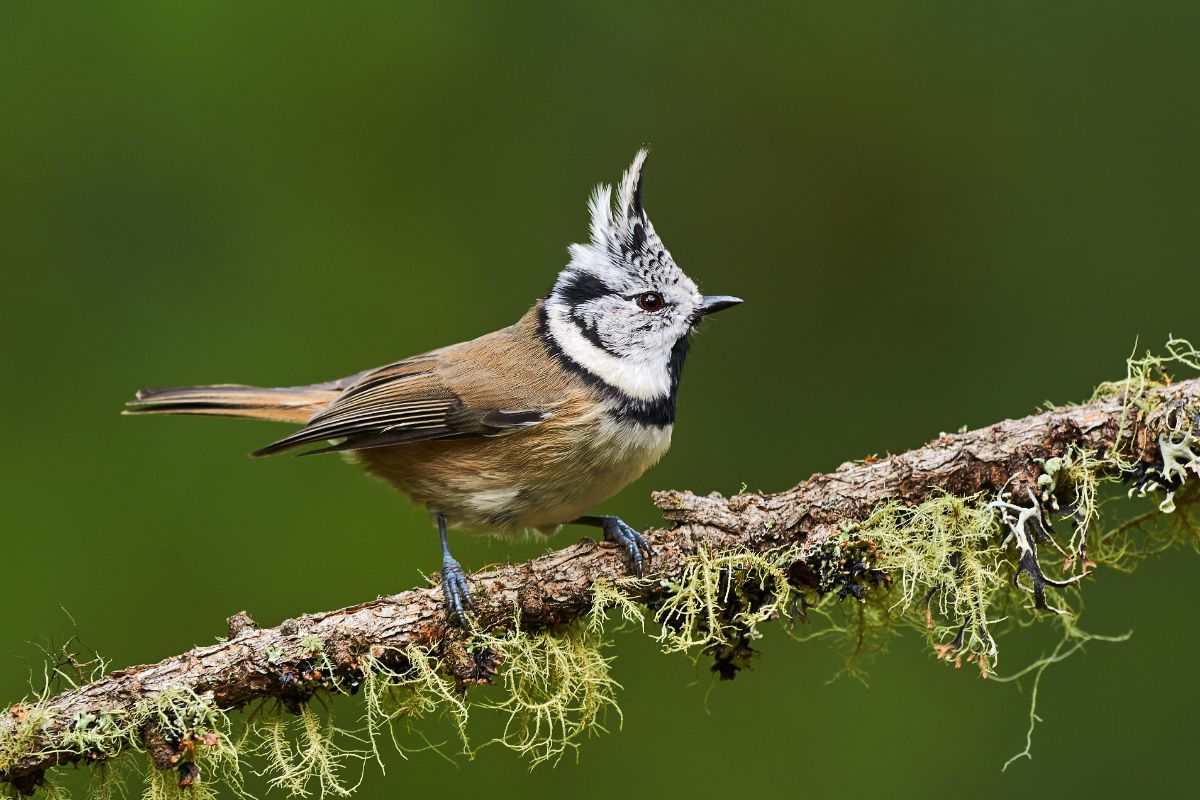
Crested Tits aren’t as colorful as the other members of this bird family. But, their erect black and white crests and “bridled” face pattern makes them outstanding among the others. The Crested Tit has black and white feathers on the head, brown and black wings, and buff-colored underneath plumage.
The crested tits are only available in Scotland. They love suet-based feeds, insects, or mealworms.
Long-Tailed Tits
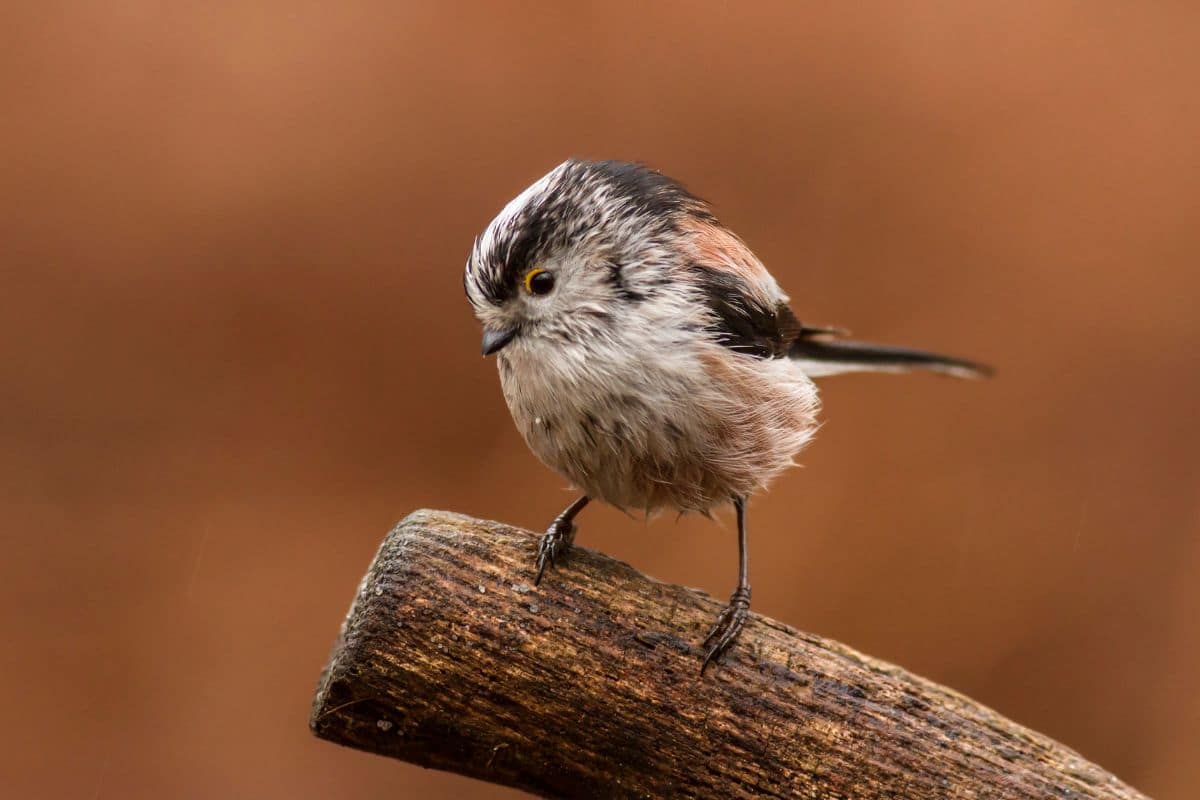
Long-Tailed Tits are noisy, friendly, and regular garden birds that relate to several bird species in Asia. They don’t belong to the tit family and are a group of seemingly-hyperactive birds.
The long-tailed tits prefer crushed peanuts, suet-based feeds, or mixed bird seed on garden feeders. Also, they flit across branches looking for spiders and insects.
The long-tailed tits are attractive, at a height of 14 cm and 9 grams of weight. Their long black and white tails, pink, black, and white backs, and pale pink underbellies disguise them even in a huge flock of birds.
These birds have a two years lifespan. Their females lay between eight and twelve eggs that take three weeks to hatch. The birds often have helpers (those who lost their brood) to care for their young ones.
The Bearded Tits
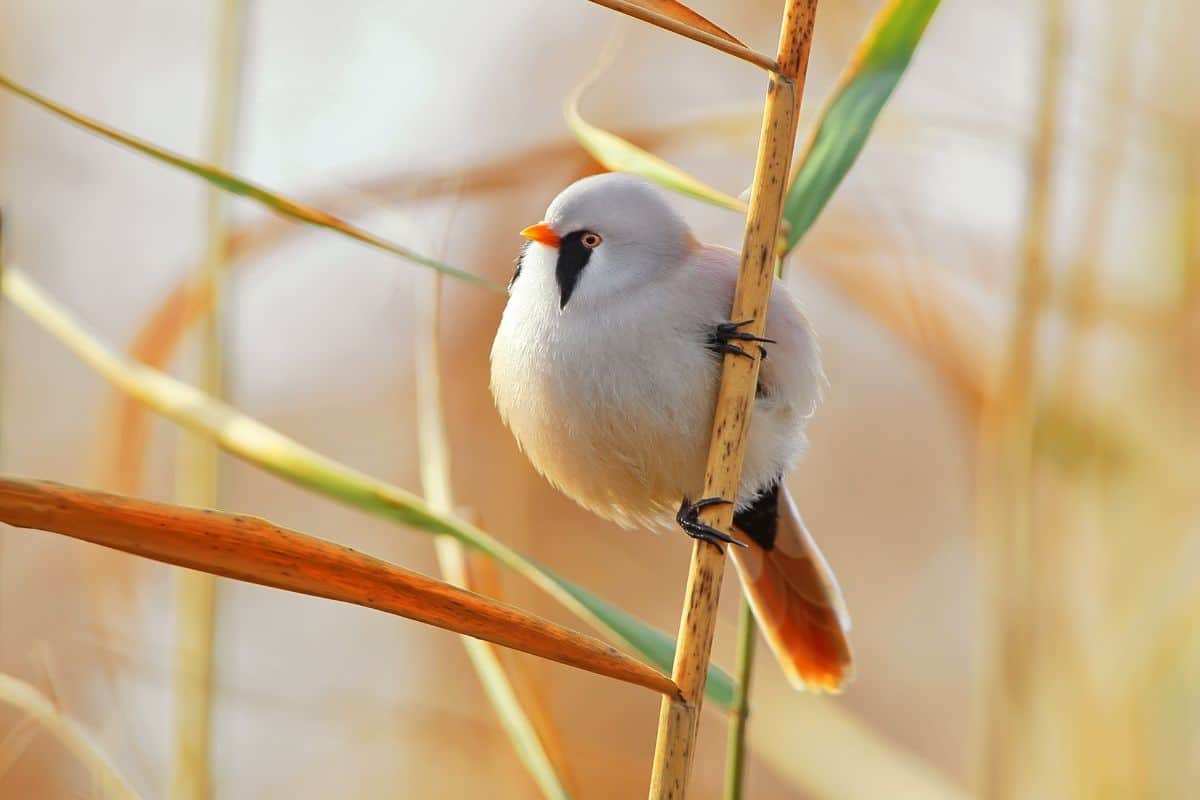
The Bearded Tits have attractive and distinctive features across this bird family. Their males have long black mustache-like stripes on each side of their beaks, with brown feathers in their bodies. The Bearded Tits also have long tails, almost a similar length to the long-tailed tits.
They’re primarily available in eastern and southern England, plus a small population in the northwestern parts.
Frequently Asked Questions
Here are the FAQs about Tit birds.
What is the smallest bird in the tit family?
The smallest bird in the tit family is the Coal Tit. It grows between 10 and 11 cm tall, a height closely below the Blue Tits.
How many different birds are in the tit family?
The tit family contains 46 species of small songbirds. They’re called titmice, tits, and chickadees, ranging from 11 to 20 cm in height, and typically live in urban and suburban habitats, forests, or woodlands.
How many types of tits are in the UK?
There are around eight species of tit birds in the UK, with two (crested and bearded tits) very localized and one (the willow tit) worryingly rare nowadays. Four of the eight species are successful garden visitors.
If you’re not keen, you may not tell the difference between the three garden tits, all thanks to their close similarity in songs, size, and colors.
The long-tailed tit is the oddest one of the different species due to the significantly long tail and pink plumage. However, it’s worth noting that bearded and long-tailed tits don’t belong to the tit family.
What is the largest of the tit family?
Great tits are the largest in the tit family, with heights ranging between 12.5 and 14 cm.
Final Words
The tit bird family contains some of the most attractive bird species in the universe. However, it isn’t easy to tell the species apart, especially if you know nothing about their features. This article has offered all the tips, features, and information you need to understand these bird species.
